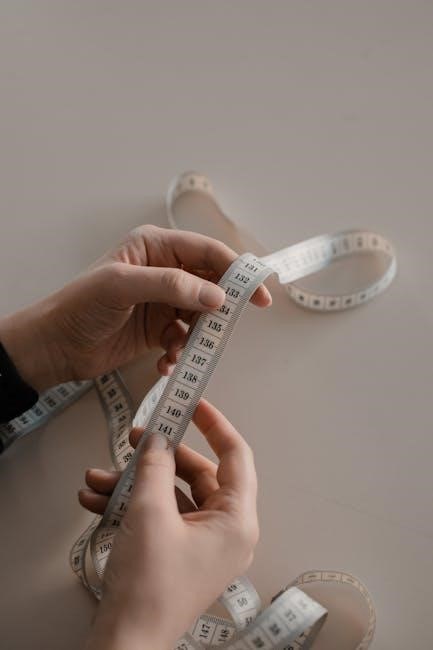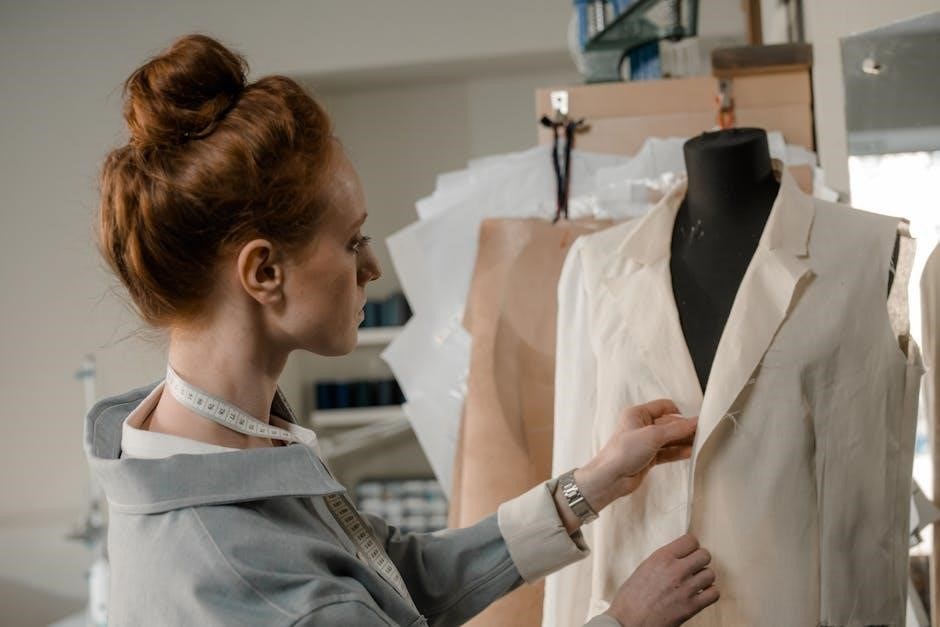Oasys Max Multifocal Fitting Guide: A Comprehensive Plan
The Oasys Max Multifocal Fitting Guide provides a structured approach to multifocal lens fitting. This ensures successful adaptation and optimal vision for presbyopic patients. The guide encompasses initial assessment‚ lens selection‚ and fine-tuning. By following this plan‚ practitioners can enhance patient satisfaction.
Understanding the Oasys Max Multifocal Lens Design
The Oasys Max Multifocal lens design incorporates advanced technologies to address the unique visual needs of presbyopic patients. Key features include a pupil-optimized design‚ which accounts for age-related changes in pupil size‚ ensuring optimal vision at various distances. This design leverages aspheric optics to provide a smooth transition between near‚ intermediate‚ and distance zones‚ minimizing visual distortions and maximizing clarity.
Furthermore‚ the Oasys Max Multifocal lens incorporates a unique material that enhances comfort and reduces dryness‚ promoting all-day wearability. Understanding the nuances of this design‚ including the power progression and zone sizes‚ is crucial for successful fitting. Practitioners should familiarize themselves with the lens parameters and fitting philosophy to effectively address individual patient requirements. The careful consideration of these design elements allows for precise customization and improved visual outcomes. By appreciating the intricacies of the Oasys Max Multifocal lens‚ eye care professionals can confidently provide optimal vision correction for their presbyopic patients‚ leading to increased satisfaction and long-term lens wear success.

Initial Patient Assessment and Considerations
Before initiating the fitting process for Oasys Max Multifocal lenses‚ a thorough patient assessment is paramount. This involves gathering comprehensive information about the patient’s visual needs‚ lifestyle‚ and ocular health. Begin by carefully evaluating the patient’s refractive error‚ including sphere‚ cylinder‚ and add power. Accurate refraction is critical for determining the appropriate lens power.
Inquire about the patient’s daily activities and visual demands at various distances‚ such as reading‚ computer use‚ and driving. Understanding these needs will help determine the optimal add power and lens design. Assess the patient’s ocular health‚ including tear film quality‚ corneal sensitivity‚ and any pre-existing conditions like dry eye or allergies. These factors can impact lens comfort and success. Discuss patient expectations and provide realistic goals for multifocal lens wear. Address any concerns or anxieties the patient may have about adapting to multifocal lenses. Proper patient education and realistic expectations are essential for successful outcomes. Consider the patient’s previous contact lens experience‚ if any‚ and note any challenges they may have encountered. A comprehensive assessment sets the foundation for a successful Oasys Max Multifocal lens fitting experience.
Using the ACUVUE MULTIFOCAL Fitting Calculator
The ACUVUE MULTIFOCAL Fitting Calculator is a valuable tool for simplifying the selection of the initial trial lens for Oasys Max Multifocal lenses. This online resource streamlines the fitting process‚ saving time and enhancing accuracy. To effectively use the calculator‚ begin by accurately inputting the patient’s spectacle refraction‚ including sphere‚ cylinder‚ axis‚ and add power. Ensure that the refraction is current and refined for optimal results.
The calculator uses this information to recommend an appropriate trial lens power and add power. The calculator takes into account the lens design and fitting characteristics of ACUVUE Multifocal lenses. Carefully review the calculator’s recommendations and consider any individual patient factors that may influence the final lens selection. While the calculator provides a strong starting point‚ clinical judgment and experience remain crucial. The ACUVUE MULTIFOCAL Fitting Calculator can significantly improve the efficiency and success rate of multifocal lens fittings. It helps minimize chair time and reduces the number of trial lenses required. Use the calculator in conjunction with a thorough patient assessment and follow-up evaluation to achieve optimal visual outcomes.
Determining the Optimal Trial Lens
Selecting the optimal trial lens is paramount for successful Oasys Max Multifocal lens fitting. Begin by utilizing the ACUVUE MULTIFOCAL Fitting Calculator‚ inputting accurate refractive data‚ including sphere‚ cylinder‚ axis‚ and add power. The calculator provides a suggested starting point‚ streamlining the selection process. However‚ consider individual patient factors beyond the calculator’s output. Assess the patient’s visual needs‚ lifestyle‚ and previous contact lens experience.

Carefully evaluate the patient’s corneal curvature and pupil size‚ as these parameters can influence lens fit and performance. Choose a trial lens that closely matches the calculated power and add‚ while also considering the lens diameter and base curve to ensure proper centration and movement. When evaluating the trial lens on the eye‚ assess centration‚ movement‚ and overall comfort. Perform an over-refraction to fine-tune the power and address any residual refractive error. It is crucial to assess both distance and near vision to optimize visual acuity at all distances.
Addressing Mid/High ADD Combinations
Managing mid to high add powers in Oasys Max Multifocal fittings requires a strategic approach. These patients often present unique challenges‚ necessitating careful consideration of lens parameters and fitting adjustments; When encountering a mid/high add combination‚ it’s often beneficial to consider a slight modification to the suggested fitting.
According to fitting guidelines‚ reducing the ADD power in the non-dominant eye while slightly increasing the distance correction (+0.25D) can enhance binocular balance and visual comfort. This adjustment aims to optimize near vision in the dominant eye while maintaining clear distance vision in both eyes. Fine-tuning the power in this manner can improve the overall visual experience‚ particularly for demanding near tasks. It is crucial to carefully evaluate the patient’s subjective response to these adjustments.
Assess both distance and near acuity‚ as well as binocular vision‚ to ensure optimal visual performance. Be prepared to iterate on the lens power and add to achieve the best possible balance between distance and near vision.
Manufacturer’s Fitting Guide Importance
Adhering to the manufacturer’s fitting guide is paramount for successful Oasys Max Multifocal lens fittings. Each lens design possesses unique characteristics‚ options‚ and nuances. Deviating from the recommended protocols can lead to suboptimal visual outcomes and patient dissatisfaction. The fitting guide serves as a comprehensive resource‚ outlining the precise steps and considerations for achieving an accurate and comfortable fit.
It details the recommended initial lens selection based on refractive error‚ add power‚ and other patient-specific factors. The guide also provides valuable insights into troubleshooting common fitting challenges‚ such as inadequate visual acuity or discomfort. By meticulously following the manufacturer’s instructions‚ practitioners can minimize fitting errors and maximize the likelihood of a successful lens adaptation.
Furthermore‚ the fitting guide often includes information on lens handling‚ care‚ and replacement schedules‚ which are essential for patient education and long-term lens wear. Utilizing the manufacturer’s fitting guide ensures that you leverage the knowledge and experience incorporated into the lens design‚ leading to better patient outcomes.

Pupil Optimization in Multifocal Lenses
Pupil size plays a crucial role in the performance of multifocal contact lenses‚ particularly the Oasys Max Multifocal. These lenses often employ pupil-optimized designs to address the challenges posed by age-related pupil changes. As individuals age‚ their pupil size tends to decrease‚ impacting the amount of light reaching the retina and potentially affecting visual acuity‚ especially at near distances.
Pupil-optimized multifocal lenses are designed to account for these age-related variations‚ ensuring that the appropriate zones of the lens are aligned with the patient’s pupil size. This optimization helps to maximize the use of the lens’s power profile‚ providing clear vision at both distance and near.
Furthermore‚ the design considers the dynamic changes in pupil size under varying lighting conditions. By carefully matching the lens optics to the patient’s pupil characteristics‚ practitioners can enhance visual performance and minimize unwanted visual disturbances such as glare or halos. Therefore‚ understanding pupil dynamics and utilizing pupil-optimized lenses are essential for achieving optimal outcomes.
Adjusting for Age-Related Pupil Changes
As individuals age‚ their pupils undergo natural changes that can significantly impact the performance of multifocal contact lenses. The most notable change is a decrease in pupil size‚ particularly in low-light conditions. This reduction in pupil diameter affects the amount of light entering the eye‚ which can reduce image brightness and clarity‚ especially in presbyopic patients relying on multifocal lenses.
To compensate for these age-related pupil changes‚ it is essential to consider the patient’s age and lighting conditions during the fitting process. Utilizing lenses designed with pupil optimization in mind‚ such as the Oasys Max Multifocal‚ can help ensure that the appropriate zones of the lens align with the patient’s pupil size.
Additionally‚ adjusting the ADD power based on the patient’s age and visual demands is crucial. Older patients may require higher ADD powers to achieve clear near vision. Regularly monitoring the patient’s visual acuity and making necessary adjustments to the lens parameters can help maintain optimal vision and comfort.
Troubleshooting Common Fitting Issues
Even with a comprehensive fitting guide‚ challenges can arise during the multifocal lens fitting process. Common issues include blurred vision at distance or near‚ haloes or glare‚ and discomfort. Addressing these problems promptly and systematically is crucial for patient satisfaction.
If a patient reports blurred distance vision‚ verify the distance correction and consider adjusting the sphere power. Over-refraction can help fine-tune the prescription. For near vision issues‚ assess the ADD power and increase or decrease it accordingly.
Haloes and glare are often related to the lens design and pupil size. Ensure the lens is properly centered and consider a lens with a smaller optic zone. If discomfort is the primary concern‚ evaluate the lens fit and material. A lens that is too tight or too loose can cause irritation.
Additionally‚ educate patients on proper lens care and handling to prevent complications. Regular follow-up appointments are essential to monitor the lens performance and address any emerging issues.
Enhancing Patient Satisfaction with Lens Selection
Selecting the right multifocal lens is paramount for ensuring patient satisfaction and successful lens wear. A thorough understanding of the patient’s visual needs‚ lifestyle‚ and expectations is essential. This involves a detailed discussion about their daily activities‚ reading habits‚ and visual demands at different distances.
Consider the lens material‚ design‚ and parameters available when choosing a multifocal lens. Factors such as oxygen transmissibility‚ water content‚ and modulus can impact comfort and ocular health. The lens design should align with the patient’s pupil size and refractive error to optimize visual performance.
Utilize fitting guides and calculators to determine the appropriate trial lens. Encourage patients to wear the trial lenses in their typical environment to assess their vision and comfort in real-world conditions. Address any concerns or complaints promptly and make necessary adjustments to the prescription or lens parameters.
Provide clear instructions on lens care and handling to prevent complications and prolong lens life. Emphasize the importance of regular follow-up appointments to monitor lens performance and address any emerging issues‚ ultimately leading to enhanced patient satisfaction.

